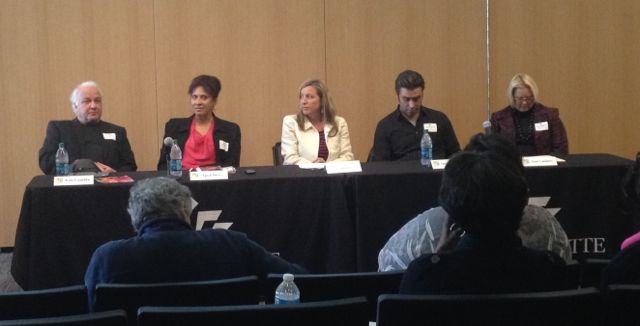
Challenges to arts journalism
Arts journalism has a responsibility to the arts. Undeniably, they have a reciprocal relationship. Arts journalism depends on the arts for content, while the arts benefit in various ways from media coverage. But responsibility?
Ken Lambla, AIA, Dean of the College of Arts + Architecture at the University of North Carolina Charlotte issued this charge to arts journalists last Saturday, January 12th, at the Charlotte Arts Journalism Alliance conference – “Covering the Arts.” The Charlotte Arts Journalism Alliance (CAJA) is a relatively new partnership between UNC Charlotte and five major media players in Charlotte:
Responding to the Knight Foundation and the National Endowment for the Arts’ challenge to create new models for arts journalism, CAJA aims to bring awareness to the area’s cultural scene and deepen our community conversation and understanding of the arts.
Lambla’s commission still lingers with me. His premise that arts journalism is not merely entertainment because the arts are not merely entertainment is something I agree with completely. Arts journalism should have much higher goals and can impact a community by generating a quality flow of news about the arts. It can educate and broaden our understanding. It can engage people with new ideas and trends. It can expose reality. And it can create community.
“Trends in the Arts” panel at the Charlotte Arts Journalism Alliance Conference January 12, 2013. Left to right: Ken Lambla, April Berry, Crista Cammaroto, Jacomo Bairos, Anne Lambert.
But the questions are how to achieve this when arts coverage is decreasing due to budget cuts, and how to adapt to the 21st century where technology has drastically increased the pace and availability of information. Conference presenter, Dr. Augie Grant, offered some solutions to this issue in his talk “Writing Across all Forms of Media.” He gave great pointers on how to adapt arts coverage to social media, user-generated content and new modes of communication. Grant left us with this valuable insight: plain text is still the most effective form of communication; we need only look at a Google search page to understand this.
My new challenge: 1. How do I make my arts writing more relevant, portable and participatory? 2. How do I fulfill the lofty goals Lambla laid out in 350 words or less?
Recent Content
-
Artsarticle ·
-
Artsarticle ·
-
Artsarticle ·

